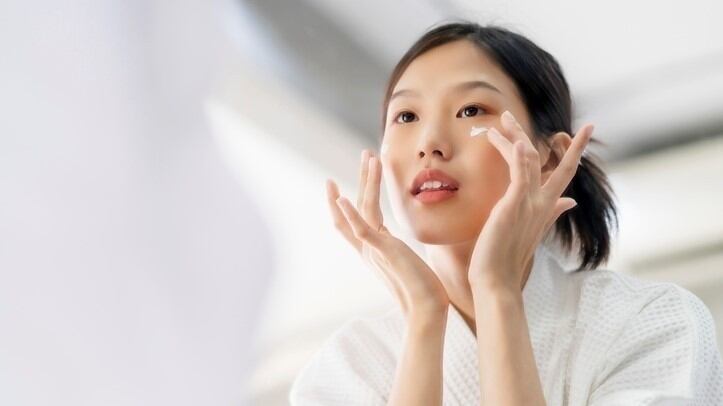New research suggests that herbal formulations containing thyme, wheat grass and ginseng, along with ferulic and gallic acid, are the most promising natural products for new cosmetics with skin anti-ageing properties.
Writing in the journal Molecules, researchers noted that the development of new dermocosmetics has rapidly increased due to consumer demand for non-invasive products with low adverse effects.
Furthermore, natural compounds of plant origin and herbal-derived formulations have been popularised due to their safety credentials and actives.
Based on this, researchers this month published a new review to identify the recent advances in herbal-derived product research, including formulations and isolated compounds with emerging skin anti-ageing properties.
The increasing use of vitamins in cosmetics and daily consumer products could be responsible for rising rates of allergic contact dermatitis (ACD) in the general population, a team of European experts has warned.
Vitamins A, E, B3, B5, B6, and C and their derivatives are used for their antioxidant and anti-ageing properties in cosmetics.
In order to update the role of vitamins as inducers of ACD, by looking at their clinical manifestations and possible cross‐reactivity, the research team recently published a new review.
They analysed more than 100 studies and found that ACD caused by synthetic forms of vitamins in cosmetics is ‘an underestimated issue’.
They also found that lipid‐soluble vitamins are more prone to cause ACD when used in cosmetics or moisturizers
Meanwhile, water‐soluble vitamins are more likely to induce immediate type reactions like urticaria or anaphylaxis.
Pass the buck: Sea Buckthorn displays strong anti-ageing skin benefits – New China research
Sea buckthorn proanthocyanidins have been shown to display strong anti-ageing activity in human skin fibroblasts, researchers from China have reported.
Fibroblasts are the main cells in the dermis that can synthesise collagen, which delays cell ageing and maintains and provides skin elasticity
Sea buckthorn (Hippophae, Elaeagnaceae) is widely cultivated in Europe, Canada, and the United States. It is popular in the food and pharmaceutical industries due to its richness in various bioactive components, such as vitamins, amino acids, and flavonoids.
High concentrations of proanthocyanidins are found in Sea buckthorn seeds, roots, flowers, green berries, and stems.
In recent years, studies have discovered that proanthocyanidins have a variety of physiological functions in relation to cardiovascular diseases, retinal photodamage, diabetes and weight loss.
However, the understanding of how it may aid skin ageing and its mechanisms of action were unclear.
Therefore, researchers treated human skin fibroblasts (HSFs) with different concentrations of hydrogen peroxide (H2O2) to study the protective effect and mechanism of Sea buckthorn proanthocyanidins (SBP) on how they aged.
Regional skin status map: New data reveals major difference in skin parameters across China
Researchers have created the first facial skin status map of Chinese females to provide guidance for regional skincare - and uncovered significant differences across the country.
They measured eight facial skin parameters from 1092 Chinese females, collected environmental data from seven cities in China and investigated the individual lifestyles of all the volunteers.
The data revealed that there are significant regional differences in facial skin barrier characteristics and skin tone.
One of the most obvious differences was a better skin barrier in the western region, as indicated by high skin hydration and sebum secretion and a weakly acidic pH.
They also found that lighter and darker skin tones were found in the western and southern regions, respectively.
Elaborating on the findings, reserachers explained that they divided skin indicators into “skin barrier





